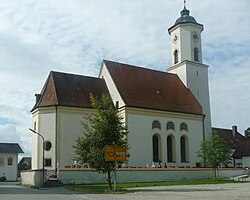Rosenheim is a Landkreis (district) in the south of Bavaria, Germany. Neighboring districts are, clockwise from the west, Miesbach, Munich, Ebersberg, Mühldorf, and Traunstein, with the Austrian province Tirol across the southern border. The district entirely surrounds the city of Rosenheim, which is independently administered but hosts the district's administration; both the city and the district share the "RO" designation for their license plates.
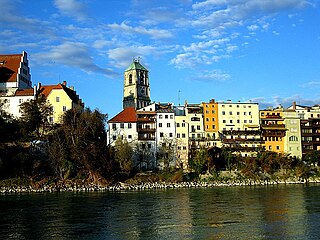
Wasserburg am Inn is a town in Rosenheim district in Upper Bavaria, Germany. The historic centre is a peninsula formed by the meandering river Inn. Many Medieval structures remain intact, giving the city a unique view.

Raubling is a municipality in the district of Rosenheim, in Bavaria, Germany. It is situated on the western bank of the river Inn, 7 km south of Rosenheim.

Prien am Chiemsee is a municipality in the Upper Bavarian district of Rosenheim in Germany. The town is a certified air and Kneipp spa on the western shore of the lake of Chiemsee, 16 km (9.3 mi) east of Rosenheim.

Feldkirchen-Westerham is a municipality in the district of Rosenheim, in Bavaria, Germany. It is situated 22 km west of Rosenheim.

Gstadt am Chiemsee is a municipality in the district of Rosenheim, Bavaria, Germany. It is located on lake Chiemsee.
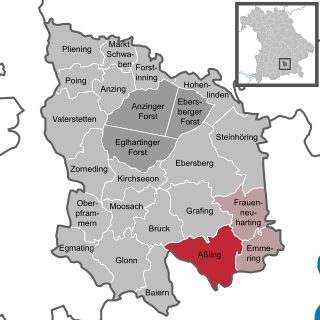
Aßling is a municipality in the district of Ebersberg, Upper Bavaria, Germany. It is, along with the communities of Emmering and Frauenneuharting, a member of the administrative community of the same name.

Haag in Oberbayern is a municipality in the district of Mühldorf in Bavaria in Germany, in December 2013 the municipality had a population of 6359.

Amerang is a municipality in the district of Rosenheim in Bavaria in Germany.

Babensham is a municipality in the district of Rosenheim in Bavaria in Germany. It lies on the river Inn.

Griesstätt is a municipality in the district of Rosenheim in Bavaria, Germany. It lies on the river Inn.
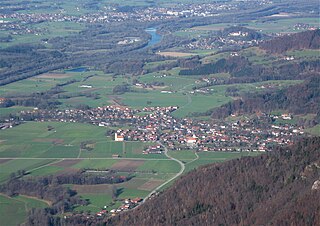
Nußdorf am Inn is a municipality in the district of Rosenheim in the state of Bavaria in Germany. Nußdorf consists of 23 boroughs and is a tourist destination in the Inn Valley between the Heuberg Wendelstein mountains on the Tyrol border. Nußdorf town center has Baroque churches and traditional farm houses.

Ramerberg is a municipality in the district of Rosenheim in Bavaria in Germany. It lies on the river Inn.

Rimsting is a municipality in the district of Rosenheim in Bavaria in Germany. It lies on the shore of Lake Chiemsee between the municipalities of Prien am Chiemsee and Bad Endorf.
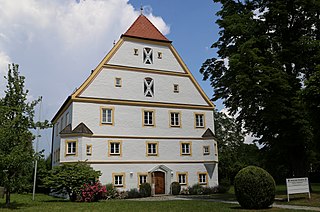
Schechen is a municipality in the district of Rosenheim in Bavaria in Germany. It lies on the river Inn.
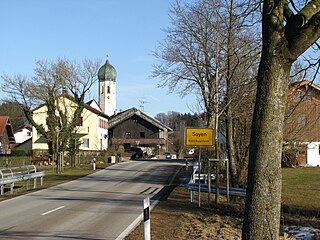
Soyen is a municipality in the district of Rosenheim in Bavaria in Germany. It lies on the river Inn.

Vogtareuth is a municipality in the district of Rosenheim in Bavaria in Germany. It lies on the river Inn.

Pfaffing is a municipality in the district of Rosenheim in Bavaria in Germany.

Halfing is a municipality in the district of Rosenheim in Bavaria in Germany. It is located in the western part of the Chiemgau area, half-way between Chiemsee and Wasserburg am Inn.
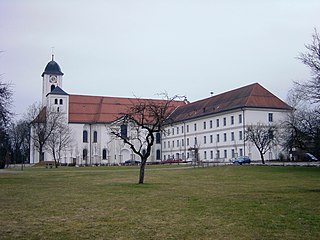
Rott am Inn is a municipality in the district of Rosenheim in Bavaria in Germany. It lies on the river Inn.
